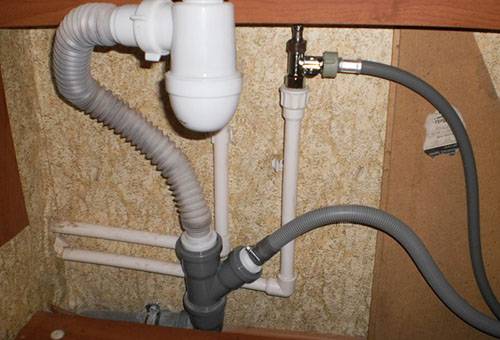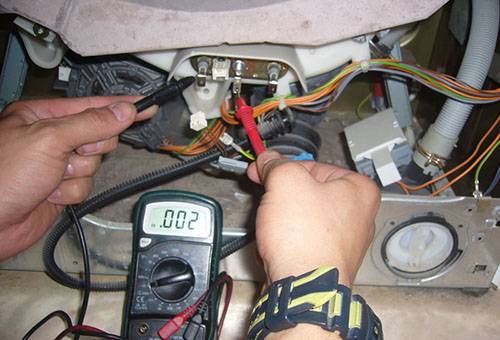Why did the washing machine continuously draw water during the washing process?
Modern household appliances are not immune from various kinds of breakdowns, which give its users a lot of worries. For example, if you notice that your washing machine constantly draws water during washing, you will probably understand that something is wrong with it, and want to take measures to solve the problem. Indeed, pulling over with repairs in this situation is a big waste, given how much water will go, as well as the prices of water utility services. The first thing that most people immediately think of is contacting a home appliance repair technician. But such a solution is not always the best, since sometimes you can fix everything on your own. This will depend on the nature of the malfunction.
Causes
Generally speaking, there are three main reasons why the automatic washing machine constantly draws and discharges water when it is washing.
- Incorrect connection of the drain hose to the sewer.
- Failure of the inlet or outlet valve.
- A malfunction associated with the sensor that monitors the level of fluid that is typed into the machine.
But it is unlikely that the dry list of reasons given above that can cause the abnormal operation of the washing unit will be of some use to you. Therefore, it is worthwhile to learn in more detail how the above-mentioned malfunctions affect the fact that the automatic machine continuously collects and lowers the working fluid.
It is believed that the device is correctly connected to the sewer system if the drain hose is not connected directly to it, but through a siphon, and its end is fixed above the working drum of the unit, that is, at a height of about 60 cm from the floor. As a rule, if the hose is lowered directly into the sewer, the working tank in the washing machine is constantly recruited and released when it starts. This problem is usually detected immediately after installing a new, recently purchased device. Perhaps, when connecting the hose, they were guided by the principle “the simpler the better” and ignored certain requirements of the operating instructions.
As for the inlet and outlet valves, their malfunction is usually associated with an electromagnetic shutter installed inside them. This mechanism is controlled by the electronic control system available in the washing machine. It initiates the supply of voltage to the coil, which draws in a magnetic rod, thereby acting on the membrane that opens the valve opening. When filling or discharging of water is completed, the coil power is turned off, and the spring returns the membrane to its original position, closing the hole. The essence of a valve malfunction may be that:
- the coil burned out
- the membrane has lost its elasticity
- the spring has become weaker.
If the spring has loosened or the filler valve membrane has deteriorated, the washing machine will be constantly filled even when it is turned off.
The fill level sensor of the working tank in the washing machine is called a pressure switch. It reacts to a change in pressure in the system and transmits a signal to the control center, which turns on and off the flow and discharge of fluid. The pressure switch can transmit incorrect signals to the “brain” of the unit if a blockage occurs in the machine’s internal circulation system, which affects pressure indicators. The same result can be if the tightness is broken - for example, a crack appeared in the tube connected to the pressure switch.
What can be done in this or that case?
First of all, you need to make sure that the drain hose is connected correctly if you did not install the machine yourself.Sometimes this is difficult to do, as various kinds of furniture and other interior items can interfere with the free viewing of hydro-communications. But in this case, it is not necessary to move the bedside tables and tables or disassemble the partition, behind which there are sewer pipes.
You can simply follow these steps.
- Turn on the washing machine and let it draw water.
- When the drum is full, transfer the device to the drain.
- In the middle of an operation, pause it by setting a pause mode.
- Observe the further behavior of the fluid in the drum.
If you notice that it continues to decrease, it means that the hose is not connected correctly. If the level remains the same, the reason lies in the valve or pressure switch.
Checking the drain valve is also not difficult. Its terminals must be freed from the wires and connected to them 220 V from an external power source. If the valve is working, you will hear a click, after which water will flow from the drain pipe.
Tip
Please note that before starting this test, the fluid is first collected in the machine so that there is something to let out. And immediately prepare the drain container.
If nothing happened, then most likely the coil burned out and the valve needs to be replaced. The replacement of this part will have to be done when the membrane or spring has become unusable. Their malfunction will be indicated by the fact that water will constantly ooze through the drain valve, even if the washing machine is turned off.
You can check the operation of the pressostat by freeing it from the tube going to it and unscrewing the fastening holding it. If you blow in, then the clicks of the switch located in it will testify to the serviceability of the part.
Tip
Blow into the pressure switch not very much, as you can ruin it.
Also check the hose interacting with the sensor for cracks, punctures or blockages. If it turns out that the part itself or the hose connected with it needs to be replaced, then contact a home appliance repair service and purchase a new spare part. Its replacement does not require much experience or much effort. And correcting the machine in time, you will prevent premature failure of the heating element and will not suffer financially, wasting a lot of water and powder.

